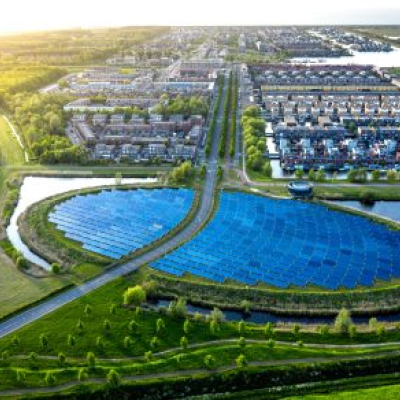From the ways we lead our lives to the production processes which support them, adopting more sustainable practices is central in ensuring a better future. The United Nation’s One Planet Network was formed in acknowledgment of just how far we have left to go – with the goal of providing a unified direction to achieve sustainable consumption and production patterns.
The network – established under the full name of the 10-Year Framework of Programmes on Sustainable Consumption and Production (10YFP) – was put in place following the 2012 United Nations Conference on Sustainable Development.
“It’s built on the recognition that the major cause of environmental degradation is our current unsustainable patterns of consumption and production,” said Charles Arden-Clarke, Head of the network’s secretariat.
A global partnership, the One Planet Network functions in acknowledgment of gaps highlighted by the United Nations Secretary General in achieving the Sustainable Development Goal (SDG) number 12 on sustainable consumption and production patterns.
“We will continue to produce and consume, live and have an economy, but we must change the way we do this,” Arden-Clarke said, adding that the One Planet Network aims to accelerate this process.
“The major cause of environmental degradation is our current unsustainable patterns of consumption and production”
Piecing it together
“Within this huge task… we have to have some kind of focus,” said Arden-Clarke. One Planet Network sets this focus through six programmes on sustainable public procurement, tourism, consumer information, buildings and construction, food systems, and lifestyles and education.
Each programme creates a collaboration between specialised partners working in the relevant sector, including government, private sector, civil society, academia and technical institutions. Arden-Clarke gave the example of the tourism sector, where hotel chains are increasingly becoming interested in in applying more resource efficient practices, notably for water and energy.
To address this, solutions have been proposed, ranging from awareness raising for tourists themselves, to more sustainable designs, and even through local and sustainable sourcing of food. “There are many interfaces through which to do this,” said Arden-Clarke, “and you get more job creation in the local community and less leakage of tourism revenue out of the community.”
The work that hotels and others in the tourism sector are doing also serves to illustrate the important synergies between the different programmes.
Pointing to the collaboration between the programmes on tourism and buildings and construction, Arden-Clarke explained that these collaborations create a lot of enthusiasm and generate new ideas. Other examples include linkages between sustainable public procurement and social housing, ensuring that construction focuses on resource efficient housing to help save people money, as well as protect the environment.
“These kinds of synergies are, in some way, possibly the most exciting things about One Planet Network,” Arden-Clarke said. “The power to do more with less and reap a range of economic, social, and environmental benefits is really starting to galvanise partners into action.”
|
Watch Charles Arden-Clarke discuss the One Planet Network: |
Linking across SDGs
These linkages extend further than the programmes themselves. The accomplishments of the One Planet network contribute to the achievement of other SDGs, such as those on zero hunger (Goal 2) and energy efficiency (Goal 7).
“You can make links across the goals using the same group of actors,” Arden-Clarke said. “We have communities of practice across programmes, where they can actually cluster five or six targets across a number of SDGs, all pointing towards sustainable consumption and production.”
We spoke to Arden-Clarke during this year’s European Development Days, which focused on the role of women in development. SDG 5 on gender equality bore special mention in our conversation.
“Women are hugely important actors and there are many compelling examples of the role they play at a local level in changing patterns of production and changing consumer choice,” Arden-Clarke said.
“You can find examples of this in the food sector, in agriculture, where women have a major role in small scale production and in changing the practices which reduce their exposure to chemicals and producing healthier food for their families.”
Getting up to scale
“I think our challenge is getting to scale,” Arden-Clarke added. “We have a lot of good examples which have been implemented on a local level, or individual policies by governments, but what we need to do, is take these examples of good practice and experience and apply them much more broadly.”
“What we need to do, is take these examples of good practice and experience and apply them much more broadly”
This will require a high degree of organisation and coordination of different actors involved. “You can’t just do this with an environment ministry,” Arden-Clarke said. “There’s a whole interministerial coordination task that’s required – to start to move whole sectors in the right direction, and not just small, marginal pieces of them.”
The One Planet Network is a ten-year programme of action. “We’re half-way through,” Arden-Clarke said. “We had a midterm review and looked back at what we did – and now have a strategy to help take us to scale in the next five years."
“What I would really ask is for people to look at our website and see whether there is something in those programmes and activities that is interesting to them – things they may already be doing and not calling sustainable production and consumption – but which absolutely are. And if so, to please come and join us. This task is so big, even our network’s 600 partners are still just scratching the surface. If we’re going to scale up – we need you.”
This article was written by Craig Hill, Journalist and Content Editor at Capacity4dev.






Log in with your EU Login account to post or comment on the platform.